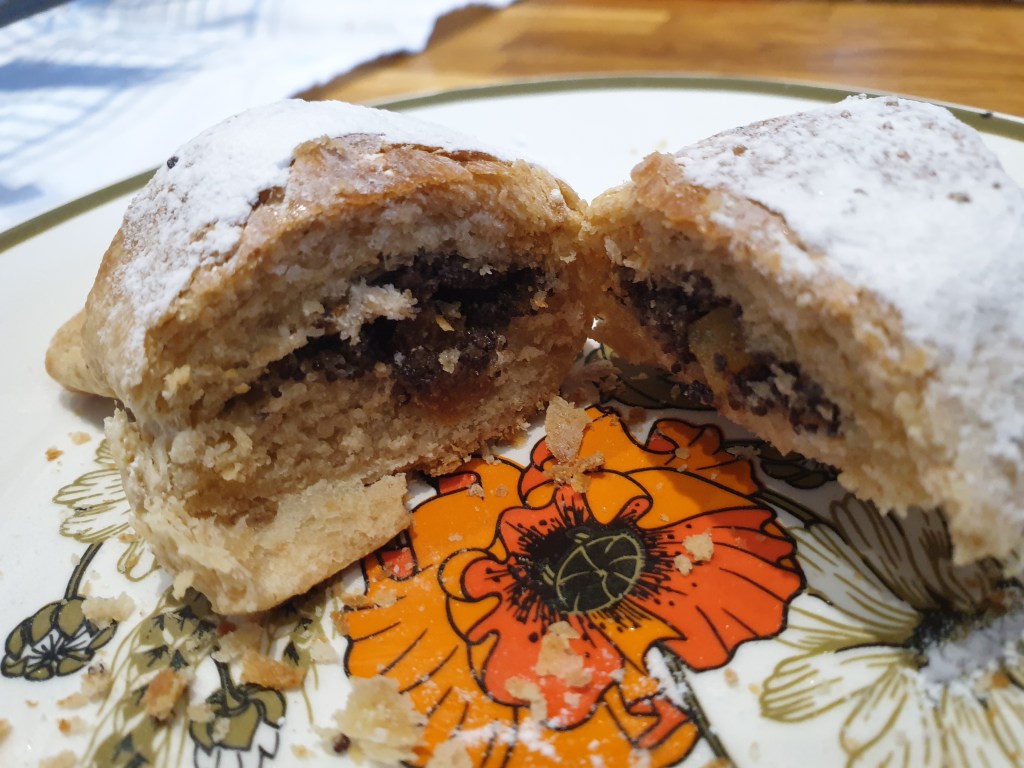- There is a recipe for poppy seed filling in one of my early posts on Poppy Seed Cake and Yeast Cakes
- This is a variation with added dried fruit and peel, which was inspired by some yeast rogaliki I tried in Gdańsk.
- I have cut down the amount of filling as you do not need as much for small cakes.
- 100g of poppy seeds is more than enough for filling small cakes and pastries.
- The filling can be used in my recipes for Rhubarb Yeast Buns(instead of the rhubarb) Mincemeat Yeast Buns (instead of the mincemeat) or rogaliki.
- I used the filling to make rogaliki.
- *
- Note – as with all yeast pasties they do not stay fresh long – so invite guest to eat then up with you.
INGREDIENTS
- 100g poppy seeds
- 300ml milk
- 2 tablespoons of runny honey
- 1 tablespoon of semolina
- 1 egg yolk
- 50g mixed peel
- 75g sultanas
Method
- Put the poppy seeds and milk into a saucepan and simmer then together for 30 minutes, stirring occasionally to stop any sticking or burning.
- The aim is to cook the seeds and adsorb as much of the milk as possible.
- You need to watch this carefully and keep adjusting the heat to stop the mixture burning.
- Keep stirring and heating until the milk is absorbed.
- The poppy seeds then need to be crushed, I use a hand held blender for about 5 minutes which I find is the easiest way.
- Once crushed, add the semolina, mixed peel and sultanas
- Whisk the egg yolk and honey together until this is thick and creamy and then add this to the mixture.



Meakin – Poppy plate






































